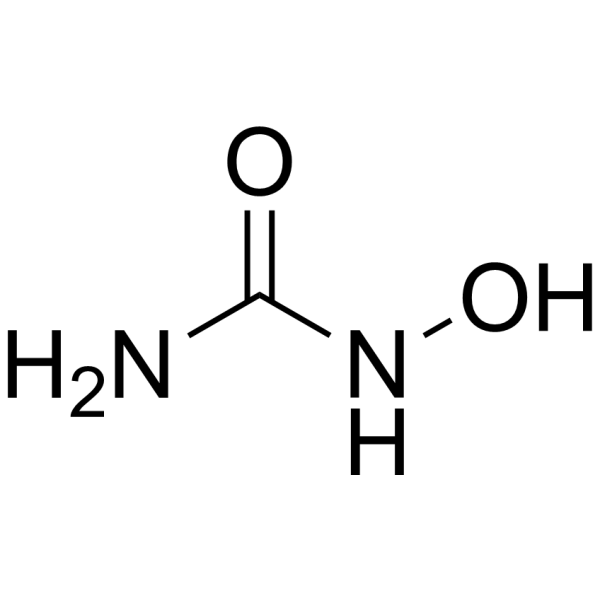Home
Products
Hydroxyurea



| Product Name | Hydroxyurea |
| Price: | Inquiry |
| Catalog No.: | CN00129 |
| CAS No.: | 127-07-1 |
| Molecular Formula: | CH4N2O2 |
| Molecular Weight: | 76.05 g/mol |
| Purity: | >=98% |
| Type of Compound: | Alkaloids |
| Physical Desc.: | Powder |
| Source: | |
| Solvent: | Chloroform, Dichloromethane, Ethyl Acetate, DMSO, Acetone, etc. |
| SMILES: | NC(=O)NO |
| Contact us | |
|---|---|
| First Name: | |
| Last Name: | |
| E-mail: | |
| Question: | |
| Description | Hydroxyurea is a cell apoptosis inducer that inhibitDNA synthesis through inhibition of ribonucleotide reductase. |
| In Vitro | Hydroxyurea is used in a number of myeloproliferative, neoplastic, HIV, and non-hematological diseases[1]. Treatment of cells in primary culture with 30 μM hydroxyurea for 96 hours significantly increases the fractional HbF content. The Gγ: Aγ-globin mRNA is induced 0.30- to 8-fold in vitro[2]. Hydroxyurea has been shown to block HIV-1 reverse transcription and/or replication in quiescent peripheral blood mononuclear cells and macrophages[3]. |
| In Vivo | Hydroxyurea therapy producs consistent reductions in WBC and ANC without improvement in anemia over 17 weeks. Hydroxyurea at 50mg/kg produces a reduced white blood cell count, absolute neutrophil count and no improvement in anemia compared to vehicle treated sickle cell mice[4]. |
| Animal Admin | Mice: To determine whether hydroxyurea would improve anemia and/or prevent or diminish the development of organ damage in the absence of HbF induction, hydroxyurea, at doses of 25 mg/kg, 50 mg/kg, and 100 mg/kg, or vehicle is administered five days per week to SCD mice[4]. |
| Density | 1.5±0.1 g/cm3 |
| Boiling Point | 222.1±23.0 °C at 760 mmHg |
| Flash Point | 88.1±22.6 °C |
| Exact Mass | 76.027275 |
| PSA | 75.35000 |
| LogP | -1.80 |
| Vapour Pressure | 0.0±1.0 mmHg at 25°C |
| Storage condition | 2-8°C |